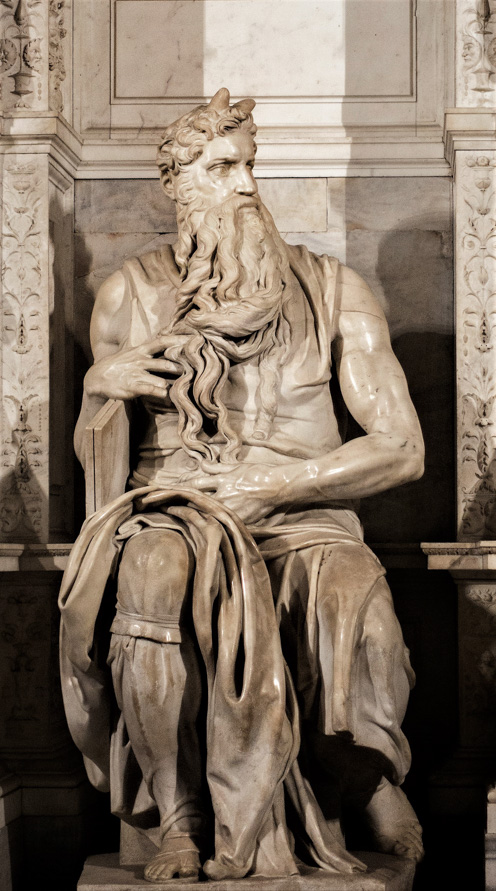Fontana dell'Acqua Felice (Fontana del Mosè) – a camouflaged papal monument

In his design Fontana used the motif of a triple triumphant arch, where a four-meter, Old Testament Moses was to stand in the main arcade. When the figure finally appeared it raised an avalanche of criticism – its proportions as well as facial expression were criticized, comparing it with the unattainable in beauty figure by Michelangelo (Michelangelos' Moses) from the Church of San Pietro in Vincoli. According to the legend the author of the statue (Leonardo Sormani) died of shame, which he had to face after unveiling his work. The side niches are decorated with Old Testament reliefs – one depicts Aaron leading the people of Israel to water, which will gush out in the desert, the second shows the judge and military leader Gideon along with his soldiers. The whole is completed with four statues of lions surrounding the fountain, which were discovered during archeological works in the Pantheon (today these are copies, the original ones are found in the Vatican Museums (Musei Vaticani).
A giant inscription adorning the fountain, glorifies Pope Sixtus V, as its founder and the man responsible for bringing water to Rome, which can of course be interpreted as a deed similar to the one that Moses performed miraculously extracting water from rock. The monument is topped off with the papal coat of arms supported by angels, a lion rampant with a diagonal band. On the top of it we will see six mountains in the shape of a pyramid which refer to the place of birth of Sixtus – Montalto.
The fountain became an inspiration for other Roman fountains – dell’Acqua Paola and di Trevi. It is worth to take a closer look at it while visiting nearby churches - Santa Susanna, Santa Maria della Vittoria and San Bernardo alle Terme.
Może zainteresuje Cię również
Church of Santa Maria della Vittoria – Baroque art on the move
Zgodnie z art. 13 ust. 1 i ust. 2 rozporządzenia Parlamentu Europejskiego i Rady (UE) 2016/679 z 27 kwietnia 2016 r. w sprawie ochrony osób fizycznych w związku z przetwarzaniem danych osobowych i w sprawie swobodnego przepływu takich danych oraz uchylenia dyrektywy 95/46/WE (RODO), informujemy, że Administratorem Pani/Pana danych osobowych jest firma: Econ-sk GmbH, Billbrookdeich 103, 22113 Hamburg, Niemcy
Przetwarzanie Pani/Pana danych osobowych będzie się odbywać na podstawie art. 6 RODO i w celu marketingowym Administrator powołuje się na prawnie uzasadniony interes, którym jest zbieranie danych statystycznych i analizowanie ruchu na stronie internetowej. Podanie danych osobowych na stronie internetowej http://roma-nonpertutti.com/ jest dobrowolne.